The Camellia Route is one of the most beautiful (and elegant) ways to discover Galicia from north to south through 12 pazos and gardens where this flower—mysterious, symbolic and surrounded by legends—becomes the true protagonist. It is an ideal journey for those seeking nature, heritage and calm: walking slowly, breathing in the humid garden air and letting yourself be surprised by places that seem designed for switching off.
Throughout the route, which often follows the paths of the routes of the Camino de Santiago, in addition to discovering gardens linked to the historical heritage of Galicia, you will be able to admire almost 8,000 varieties of camellia. We will step into pazos with tradition and history and understand why this flower, originally from Asia and passionately embraced in Galicia, became a true symbol of winter beauty.
When is the best time to do the Camellia Route?
Almost any time of year is suitable, as camellias have the extraordinary ability to bloom in different seasons. Spring, autumn and winter are the times when we will find camellias, although their most iconic flowering season is winter. If you want to experience the special charm of seeing intense, colourful flowers in the middle of the cold season, choose winter. And if you are planning your trip in connection with a Jacobean route, we are here to help guide you.
Where does the route start?
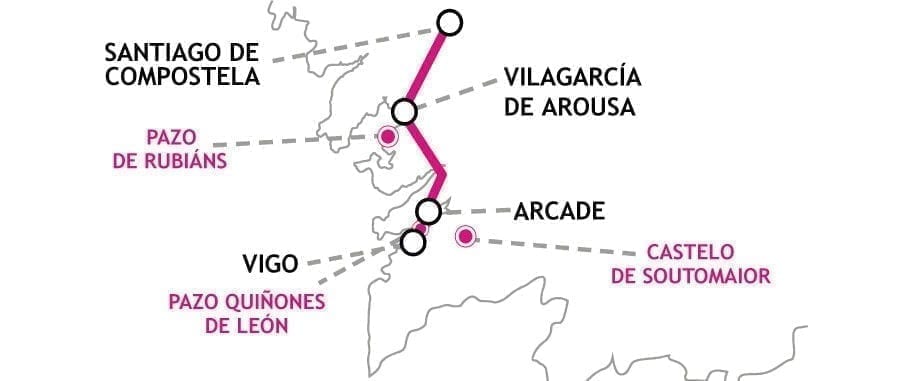
Map of the Camellia Route
The pazos and gardens that make up the Camellia Route are located in the provinces of A Coruña and Pontevedra, so you can start in the north, in Bergondo (A Coruña), and finish in Vigo, or do the route from the south. Everything will depend on the itinerary you choose.
Many of the sites are relatively close to one another (in many cases, less than 25 kilometres apart), which makes it possible to visit several in a single day if you plan your time well.
Which pazos and gardens will you find on the Camellia Route?
1. Pazo de Mariñán
Located in Bergondo (A Coruña), the garden of this legendary pazo—whose story begins with the inscription “La nada, aquí” (“Nothingness, here”) on a marble plaque by the jetty—is divided into two parts. To reach and discover that jetty, you pass through a spectacular boxwood labyrinth with varied pruning in the shape of stars, circles, flowers and coats of arms.
Yews, strawberry trees, plane trees, horse chestnuts, laurels, rose bushes, azaleas and ivy accompany the path, where the Japanese camellias, arranged in an unusual 8+1 formation, are the silent protagonists of the history of this mysterious estate.
- Before you go: check updated information on the Provincial Council of A Coruña website.
2. Alameda of Santiago
The “lung” of Santiago de Compostela, after visiting the Apostle in the cathedral, is a must-see place for visitors. It covers 85,000 square metres of gardens, where many trees are included in the Catalogue of Singular Trees of Galicia.
Other specimens, such as a Normandy fir known as “La Perona”—planted in 1947 to commemorate the visit of Eva Perón—also have their own history. And always the camellias: with more than 65 specimens of the Japanese variety (some of them centuries old), planted in 1858 for the Agricultural, Artistic and Industrial Exhibition, they eclipse everything else during the flowering season.
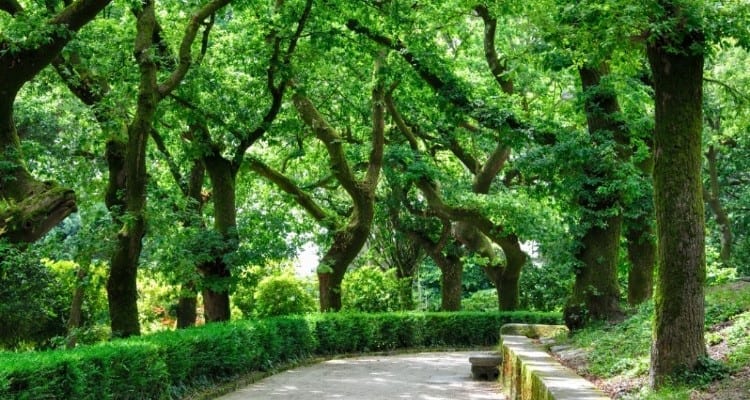
Alameda of Santiago
- Before you go: official information on Santiago Tourism.
3. Pazo de Santa Cruz de Ribadulla
The garden of this pazo is considered, for its botanical and landscape value and its diversity of ornamental vegetation, to be the most fascinating in Galicia. It was in the 19th century that “Uncle Iván” (Iván Armada y Fernández de Córdoba) significantly expanded the presence of camellias in this estate.
Strolling among imposing camellias, enormous magnolias, olive trees, ombú, Australian tree ferns, Washingtonia palms or the pyramidal oak is a true delight for the senses. An essential stop on the Camellia Route.
- Before you go: check visits and reservations on the official website of the pazo.
4. Pazo de Oca
Located in A Estrada, it is owned by the Ducal House of Medinaceli and is declared a Site of Cultural Interest. Its spectacular garden covers around 8 hectares and is known as the “Galician Versailles” or the “Generalife of the North”.
Visitors are welcomed by a parterre surrounded by perfectly trimmed boxwood paths that lead to camellias over eight metres tall, azaleas, rhododendrons, palms, oaks, walnut trees, chestnuts and birches.
Particularly striking is a stone boat placed in the centre of one of the ponds, where two sailors with cannons watch over the majestic hydrangeas arranged in its bed.
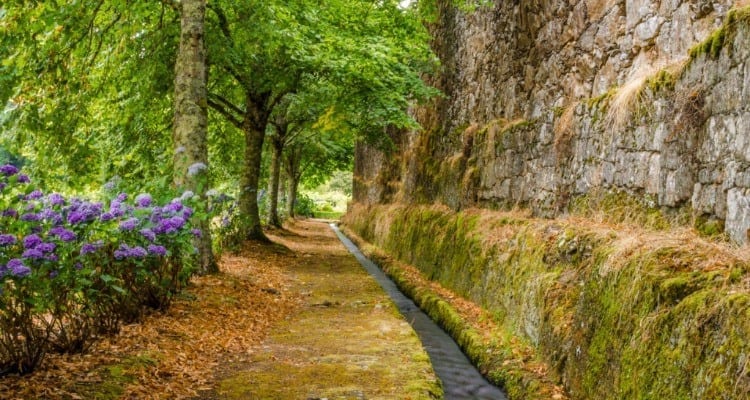
Pazo de Oca
- Before you go: tickets and conditions on the official website.
5. Rosalía de Castro House Museum
In Padrón, the final stop of the Portuguese Way, the former home of the Galician writer Rosalía de Castro preserves a small but charming garden. Stone is the main feature, and the green lawn provides the perfect contrast to admire the carpets of red and pink hybrid reticulata camellias that form around the tree as they fall.
At the centre stands the vine under which Rosalía wrote the poems collected in Cantares Gallegos, Follas novas and En las orillas del Sar. A garden where culture and nature form a perfect partnership.
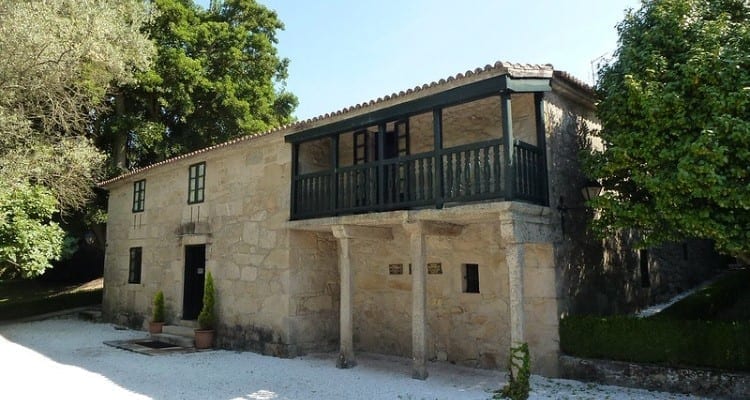
Rosalía de Castro House Museum
- Before you go: updated information from the Rosalía de Castro Foundation.
6. Pazo de Rubianes
In Vilagarcía de Arousa, right on the Padre Sarmiento Route, you will find this Garden of International Excellence, home to more than 4,500 camellia specimens across some 800 different varieties, not counting the many other botanical species present, all cared for with great dedication since the 17th century.
In the 19th century it enlisted the gardener of the Campo del Moro at the Royal Palace of Madrid, François Viet, for its expansion, and after the fires that ravaged Galicia in 2006, the pazo rose again with renewed splendour. A must-see on the Camellia Route.
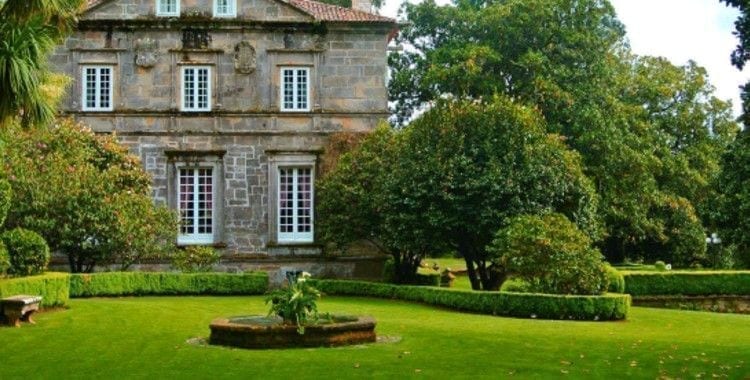
Pazo de Rubianes
- Before you go: reservations and visit options on the official website.
7. Pazo de Quinteiro da Cruz
In Ribadumia you will find this haven of peace where, in addition to tasting an excellent Albariño wine produced on the estate, you can see more than 5,000 camellias from 1,500 different varieties in bloom.
Four varieties stand out above the rest: the Japanese, the reticulata, the “higo” variety (awarded the Golden Camellia at an international competition dedicated to this tree), and the sinensis, used to produce tea.
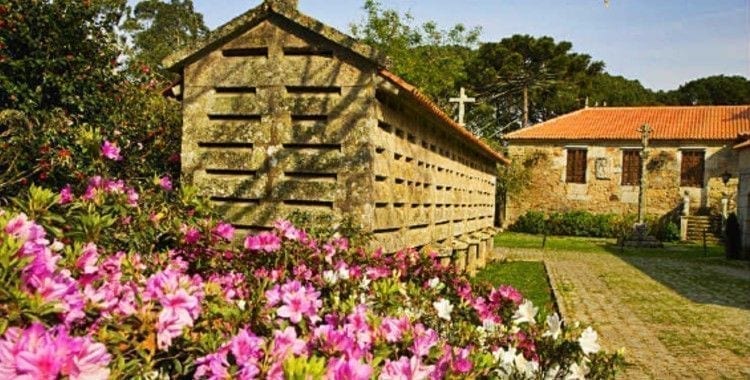
Pazo de Quinteiro da Cruz
- Before you go: visits by appointment on the official website.
8. Pazo da Saleta
In the town of Meis (Pontevedra) you will find another Garden of International Excellence thanks to its camellias. English in style and covering around 5 hectares, it was designed by landscape architect Brenda Colvin after Robert and Margaret Gimson arrived in Galicia in 1968 in search of a place to practise gardening, their great passion.
Red, white, reticulata and violet camellias bring this garden to life, which in winter (the flowering season) becomes a true natural spectacle.
- Before you go: advance booking is essential on the official website.
9. Pazo de Lourizán
Its 54 hectares of woodland, estate and gardens make this place truly awe-inspiring. The pazo, with its imperial-style façade and staircase, is a genuine gem and still preserves traces of its original use as a farm, such as a dovecote.
Walking through the Arboretum (as it has been known since 1949) is a must. Underfoot lies a multicoloured carpet of camellias, while all around you can discover nearly 2,000 tree species from around the world, many included in the Catalogue of Singular Trees.
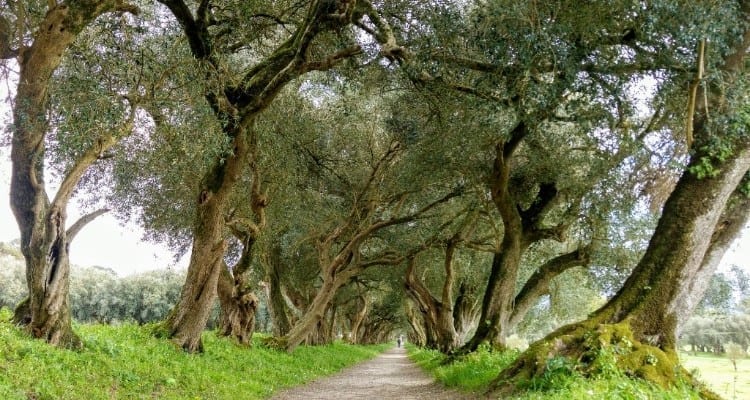
Pazo de Lourizán
- Before you go: official information from the Galician Regional Government.
10. Soutomaior Castle
In Pontevedra, located at the origin of the Vigo estuary, stands this impressive 12th-century castle and its 25-hectare garden, featuring more than a hundred varieties of camellias, ancient chestnut trees and species from all continents.
Here, roses and camellias compete in beauty and colour—red, white and pink—creating a visual and aromatic spectacle that makes the castle itself seem even more impressive.
- Before you go: check opening times and visits on the official website.
11. Monte do Castro Park
In Vigo, this park with a fortress has exceptional archaeological value thanks to a castro settlement dated between the 3rd and 1st centuries BC, located in its lower area. The botanical value of its plant species is the second major reason to spend some time here.
In 2014, to mark the 50th International Camellia Exhibition, numerous specimens were planted and organised by origin: Australia, the United States, England, Italy and Belgium, among others. A variety called “olívica” was also introduced, in honour of Vigo, whose symbol is the olive tree.
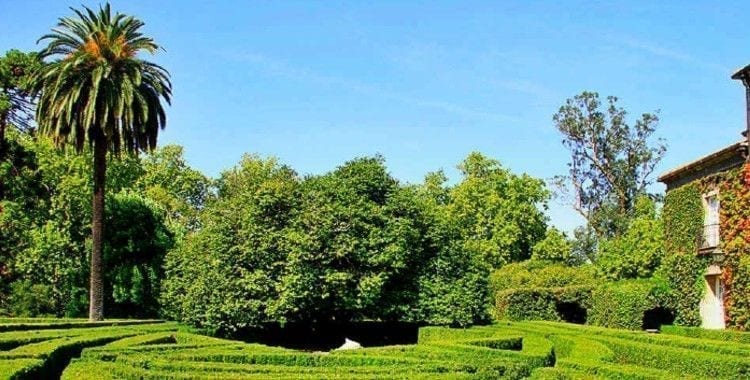
Monte do Castro Park
- Before you go: practical information on Vigo Tourism.
12. Quiñones de León Pazo Museum
In Vigo you will find another pazo that would not be complete without its garden, which adds an extra layer of beauty. Inspired by French Baroque gardens, it was created in the 19th century and is divided into six areas: entrance garden, rose garden, French garden, tea meadow, sun terrace and woodland.
During the walk, you must stop to admire a camellia of more than 205 years of the Japanese variety, known as the “Methuselah of the camellias”, considered the oldest in Galicia. It was incorporated into the garden by the Marquis of Alcedo in 1860, coming from Portuguese nurseries, and still displays its splendour in winter.
- Before you go: opening times and possible closures on the municipal website.
Walking the Camellia Route is much more than visiting gardens: it is stepping into a stately, green and unhurried Galicia, where beauty is carefully preserved and each pazo has its own character. If you are looking for an inspiring plan—one of those experiences remembered for how they make you feel—this route is a sure bet, especially in winter, when the camellia transforms the cold season into a true spectacle of colour.

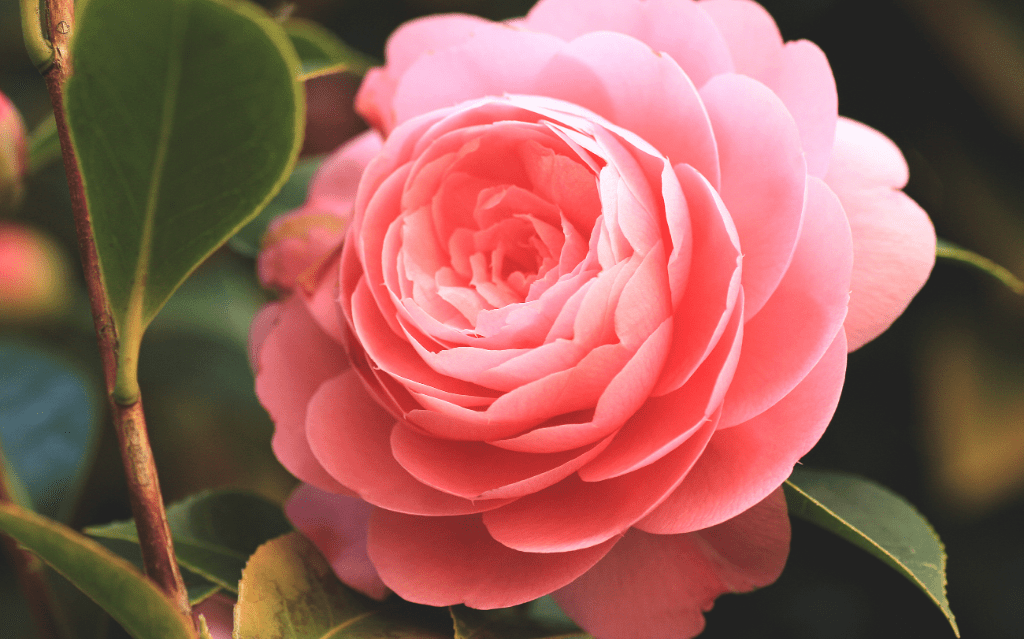










Leave A Comment